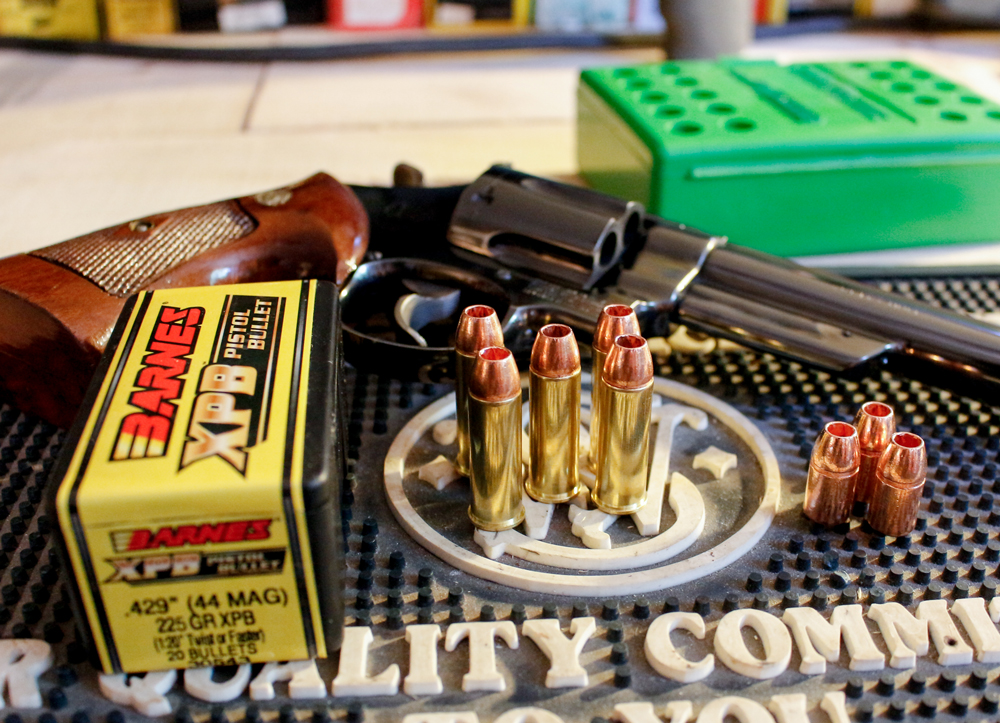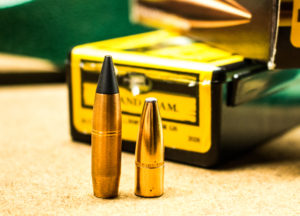

Bullet bearing surface can often be an afterthought for many ammo reloaders. This shouldn’t be the case, given it can play an important role in an accurate load.
With the plethora of different shapes and construction available today, we handloaders need to pay attention to the amount of bullet bearing surface for each projectile.
Just to explain, the bullet bearing surface is that portion of the bullet which comes into contact with the rifling of the barrel, to give the bullet the necessary spin to stabilize it. The amount of bearing surface has a direct correlation to the amount of pressure generated within your barrel, be it a pistol or a rifle.
As a quick example, a .308 caliber 180-grain cup-and-core boat tail spitzer bullet will have less bearing surface than a monometal 180-grain flat base bullet with a smooth shank. The cup-and-core bullet features a lead core, which is a denser metal than copper, and therefore will be shorter than its all-copper counterpart.
Conversely, the copper bullets, being lighter, will be longer than a lead-core bullet, as the weight differential between copper and lead must be made up in length (the bullet diameter must remain a constant).
The load data for these different bullets is as different as the bullets themselves. You must do the proper homework to find safe data for the particular bullet you are using, as the old adage that “weight is weight” doesn’t work when the bearing surfaces change so radically.
When doing load development for my Savage Model 116 in 6.5-284 Norma, I found an interesting pattern, based on what I believe to be the difference in bearing surfaces. I’ve gone on record as saying that Savage is producing one of the best barrels on the market today, and I stand by that, but this one is a little more ‘particular’ than others.
I used several different bullets, some of my usual favorites: North Fork 140-grain hollowpoints, Swift A-Frame 140-grain pills, a 130-grain Swift Scirocco II (a polymer tipped boat tail), a 140-grain Berger VLD and the 160-grain Hornady Interlock round-nose bullet.
While all of them gave excellent accuracy – I seriously couldn’t get the rifle to choke – the velocities of the boat tail bullets were 150 to 200 fps lower than what I would have expected, while the flat base bullets gave velocities much more along the lines of what the test data in the manuals had indicated.
My opinion: This barrel likes bullets with a longer bearing surface. I had buddies tell me the crown might be playing a part in the equation, but I disagree, because my experiences have shown me that a crown that is far enough out of whack to affect velocities to that degree wouldn’t print boat tail bullets into those tight little groups that this rifle does. I’m going with the bearing surface theory.

In doing some research for Handloader’s Digest No. 19 (due out early in 2016!), Marty Groppi and I were developing loads for the .357 Magnum pistol using Barnes’ fantastic 140-grain all-copper XPB bullet. Load data used mostly Accurate and Ramshot powders, as opposed to the classic Alliant 2400 or Hodgdon 110 loads that have become a staple for this handgun.
The reason? The Barnes XPB has a bunch more bearing surface than does a standard 140-grain .357 bullet, say like a Hornady 140-grain XTP. And those powders from Accurate and Ramshot, particularly Ramshot’s Enforcer, respond best to the pressure curves that the XPB generates. We got some impressive performance from this bullet/powder combination, but Marty will tell you all about that in Handloader’s 19.
Speaking of Barnes bullets, the original X bullet, which gained a huge following, was revised to the current TSX — or Triple Shock X- featuring grooves cut in the bullet perpendicular to the axis of the bore. This reduces the bearing surface of the bullet, as well as reduces the pressures.
I’ve found that using a powder on the faster burning side of the spectrum will bring those pressures and velocities back up, and will optimize performance with these bullets. The same can be said for the North Fork bullets, with their little tiny grooves in the shank.
Using these different designs will take a bit of experimentation to get right, but once you do you’ll have a better understanding of how bullet bearing surface affects the equation.

Next Step: Get your FREE Printable Target Pack
Enhance your shooting precision with our 62 MOA Targets, perfect for rifles and handguns. Crafted in collaboration with Storm Tactical for accuracy and versatility.
Subscribe to the Gun Digest email newsletter and get your downloadable target pack sent straight to your inbox. Stay updated with the latest firearms info in the industry.

![Best Concealed Carry Guns In 2025 [Field Tested] Wilson Combat EDC X9S 1](https://gundigest.com/wp-content/uploads/Wilson-Combat-EDC-X9S-1-324x160.jpg)


![Best 9mm Carbine: Affordable PCCs [Tested] Ruger Carbine Shooting](https://gundigest.com/wp-content/uploads/Ruger-Carbine-Shooting-100x70.jpg)
![Best AR-15: Top Options Available Today [Field Tested] Harrington and Richardson PSA XM177E2 feature](https://gundigest.com/wp-content/uploads/Harrington-and-Richardson-PSA-XM177E2-feature-100x70.jpg)

In my own experience that has lasted over 50 years of rifle shooting I find bullet bearing surface of no consequence as long as there is enough surface to spin the bullet. But to confuse things further what some people take for more accuracy because of longer bearing surface is actually the result of a bullets better ballistic co-efficient because of its heavier weight which results in less wind drift even at shorter ranges.
Thanks for the article Philip, I’ve wondered about using flat base bullets in my Garand, the theory being that as these old barrels get shot out the increased bullet contact would help with accuracy… Any comments? I’m not shooting out past 200 yards, most of the time my range can only handle 100 yards anyway so long distance is not an option for me.
Thanks
Bruce